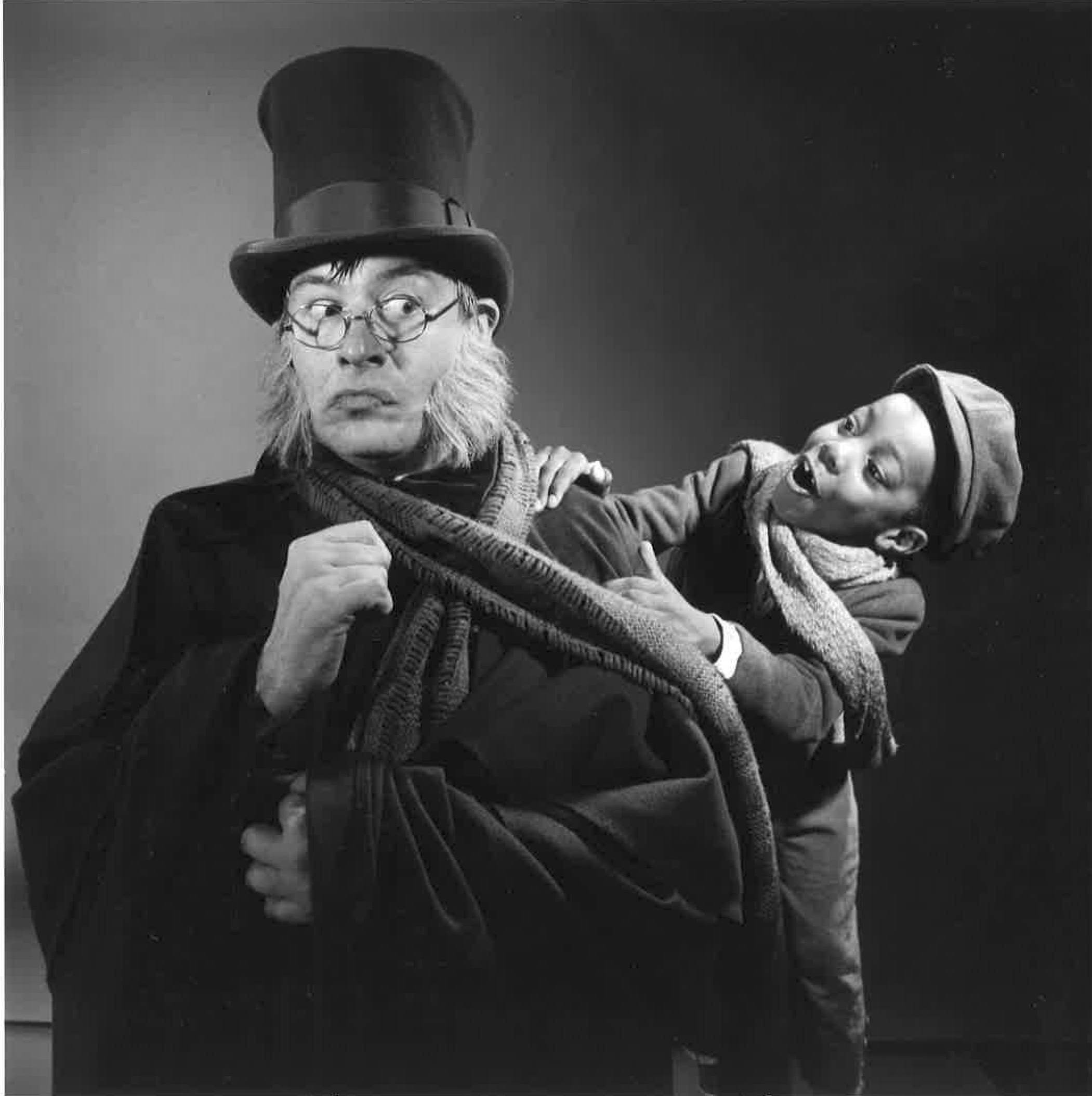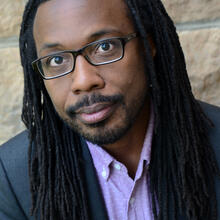I received an email from the Goodman Theatre, the oldest professional theater company in Chicago. They wondered: Was I the same Eric Styles who performed in their annual production of Charles Dickens’s “A Christmas Carol” in 1984? They were planning to commemorate the show’s 40th anniversary and looking to recruit for their “Tiny Tim Reunion.” Since I work less than two hours from the theater, I saw no reason not to go. This was an opportunity to reconnect to a moment in my personal story that shaped the trajectory of my life.
In 1984 I was a 7-year-old black kid from a working-class home in Southwest Chicago. The city had recently elected its first black mayor, Harold Washington, who worked to reverse many of the city’s persistent and pernicious policies of de facto segregation. I, along with many other black and Latino children, was an early test subject in the Chicago Board of Education’s 1982 school desegregation plan. I left my neighborhood school and started at a magnet school a few miles away.
During this time, a former preschool teacher and friend of my mother saw an ad in the paper looking for children of various ages and diverse ethnic backgrounds to audition for “A Christmas Carol.” My parents and I took a shot at it. I had no fear—probably because I had too little experience to know better—and a few weeks after my audition, we got the call. For a short time, I became a professional actor.

“A Christmas Carol” captured the progress reverberating in my own life and across the city. For the first time, the Goodman actively sought an ethnically integrated cast—a tradition that has survived to this day. That year, eight of us, out of 27 cast members, were black—a powerful first for a city as ethnically diverse and, at the time, decidedly segregated as Chicago.
The impact on black and Latino children in the audience—who were, for the first time, seeing these famous characters portrayed by actors that looked like themselves—was profound and inspiring. So, too, in a different but still quite meaningful way, was the experience for white children, many of whom had no doubt been deprived of positive public reflections of their city’s diversity. Of course, there were also complaints. One woman wrote that she longed to see an “English” Tim with the word English heavily underlined. (I wonder if she expected them to import one.)
Back then they called this “color-blind casting,” which did not sit well with me even as a child. In an orchestra you can place a musician behind a screen and have him or her play with (presumably) no idea who it is. But how could any of us have been cast without someone seeing our faces? Theater is a necessarily visual medium, and no one is blind to race.
“A Christmas Carol” captured the progress reverberating in my own life and across the city.
The director and producers were doing something important, and though they sought to downplay any political agenda, its implications were palpable and reached far beyond the theater. A crutch-carrying black boy, clad in Victorian clothes, rode through the city on posters pasted to public buses and trains. From prominently posted billboards, he beamed a snaggle-toothed grin down on passing children and adults of all races. News articles were written. The city cheered us on as we, the black, brown and white Cratchit children, flipped the switch at the annual Christmas tree lighting downtown. I even appeared on “The Bozo Show,” a local children’s variety show that aired nationally for 40 years.
It is a strange feeling to look up and see your face in advertisements as you sit in the backseat of your parents’ wood-paneled Buick station wagon. Family and friends asked for autographs from the first black Tiny Tim. Though I did not spend the next 30 years on stage, this one Christmas season set me on a path that would forever include a close association with the performing arts.
It is only in hindsight that I have discovered some theological insights into the incarnational implications of being Tiny Tim. “A Christmas Carol” illustrates—in all its festive and colorful whimsy—many of the values most associated with Christmas: gratitude, joy, generosity, family, friendship and the ever-fleeting nature of human life itself.
Imagination is key to both the narrative of “A Christmas Carol” and the ritual setting that is a theater space.
A crutch-carrying black boy, clad in Victorian clothes, rode through the city on posters pasted to public buses and trains.
Scrooge suffers from a failure to imagine the human world as more than one filled with worthless dregs who, as he so callously says, refuse to die and “decrease the surplus population.” Three spirits haunt him and seek to correct his memory and expand his heart. He is reminded again and again that his desires for wealth and self-sufficiency have long been disordered, costing him his marriage, his friendships and a chance at genuine happiness and life-giving purpose.
Scrooge is most moved by a child who sees his own tragically broken body as a reminder that the season we celebrate centers on the birth of the one who heals all wounds, “who made lame beggars walk, and blind men see.”
The theater itself is a preeminent space for communal reflection. We spectators are asked to expand our imaginations, to accept this old tale as still relevant, still capable of touching our hearts, of moving us beyond quaint nostalgia, into the deeper truths of our shared existence. The 1984 season was a year of massive change for the production, most of which did not last long, but the integrated, innovative casting has endured. This year’s Tiny Tim is being played by Paris Strickland, the first female actor in the role. She is a cancer survivor with a compressed spine so Tiny Tim’s limp is, in part, her own. She embodies Tim in a distinctive and authentic new way.
At the “Tiny Tim Reunion,” when Paris came out to greet us older “Tims,” I asked her if she was nervous. She assured me that she was not. Paris’s casting, like mine, is not aggressive or politicized. She is an actor playing a character, a boy in this instance. And yet, the powerful legacy of reimagining “A Christmas Carol” continues.
Just as expanding the family of “Tims” to be more like the children of Chicago draws a broader audience to more fully participate in the message and wonder of “A Christmas Carol,” in a much deeper way the power and inherent meaning of the Incarnation of the Christ child, of God becoming like the children of this world, draws us all into its salvific mystery. Christ joined and redeemed the whole human family in all of our complex and beautiful diversity.
“A Christmas Carol,” at its best, demands that we recognize the abundance we have all inherited: most of all life itself and the opportunity to love and be loved. It proposes that material wealth is always at risk of becoming a kind of drug, one which all too easily obscures our view of the reality of suffering. Walter Burghardt, S.J., describes prayer as a “long, loving look at the real.” Perhaps a night at the theater, with all its suspension of disbelief, can become a prayerful contemplation, a personal and social examination of our values and our actions.
Wealth cannot cure what Søren Kierkegaard aptly names as the sickness unto death—that ever-creeping possibility of despair, without which we would not be human. We are redeemed by the grace of the moment of revelation, much like Scrooge, who returns from his fanciful and spiritual journey transformed. Instead of avoiding his own history of isolation and loss, he accepts the opportunity to finally integrate its revelatory power into his life and rediscover the power of humility. The experience of being brought low, close to the ground, also exalts him, lifts him up.
The one who entered our world as the most vulnerable of children, ever willing to be an efficacious sacrament of the Father and creator of all, dares to reinvent what it means to be human and asks us to recognize him, the God who blesses us, in all of us, everyone.











Although I graduated from a Catholic college after 12_previous years. of Catholic education, and did well in my religion classes, I absolutely am not a theologian, However, as an imperfect gay Catholic, I at first was uncomfortable with the Tiny Tim character being portrayed by a young girl disabled by cancer. This was despite being a retired Special Education teacher who worked with severely brian damaged children (so I believe I respect and sympathize with seriously disabled people). . Jesus was incarnated as a infant boy. This can't be denied. However, I understand how Tiny Tim represents human beings in all their vulnerabilities, just as Jesus took the human form of a defenseless infant, "of God becoming like the children of this world."
Excellent. Isn't it interesting? God chose to be with the human race, and came to earth as a Jew. Maybe the most despised and hated groups of people in the history of mankind. Yet, God chose to come as a Jew. And even today, we don't see it. He came as a minority. He came as one who is discriminated against. He came as one whom people have hurt and harmed for thousands of years. He came as a Jew so that we, hopefully, could finally see him in everyone. Thank you for your thoughts and the article, Eric. Well said.